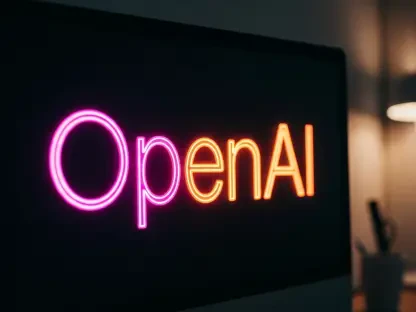I’m thrilled to sit down with Vijay Raina, a renowned expert in enterprise SaaS technology and software design. With his deep knowledge of digital platforms and innovative tools, Vijay offers unique insights into the evolving landscape of streaming services. Today, we’re diving into the recent updates for free users on one of the world’s leading music platforms, exploring how these changes impact user experience, business strategies, and the future of ad-supported models. Our conversation touches on the new features being rolled out, the limitations that remain, and the broader implications for user engagement and revenue streams.
How do you see the recent updates for free users reshaping their overall experience on streaming platforms?
These updates are a game-changer for free users. For the first time, they’re getting a taste of on-demand control with features that let them pick specific songs, search for tracks, and even play music shared by friends or artists on social media. It’s a significant shift from the earlier shuffle-only model, where users had little say over what played next. This move brings the free tier closer to a premium experience, even if it’s not fully there yet. It’s a smart way to make the platform more sticky for users who aren’t ready to pay for a subscription.
Can you break down what these new features, like “Pick & Play” or “Search & Play,” actually mean for someone using the free version?
Absolutely. “Pick & Play” lets free users choose and play any song directly from the app, which wasn’t possible before. “Search & Play” takes it a step further by allowing them to look up a specific track and hit play instantly. These features remove a lot of the frustration that came with being locked into shuffle mode. It’s about giving users more agency, even if it’s within certain boundaries, and making the app feel more intuitive and user-friendly.
What role does the “Share & Play” feature play in connecting the platform with social media?
“Share & Play” is a clever integration. It lets free users play songs that are shared by friends or artists directly from platforms like Instagram, whether it’s through Stories or other formats. This creates a seamless bridge between social media and the streaming app, encouraging users to open the app more often when they stumble across music online. It’s a brilliant way to drive engagement by tapping into the viral nature of social sharing.
Looking back, how restrictive was the free user experience before these updates came along?
It was pretty limiting. Free users were stuck in shuffle mode, meaning they couldn’t pick specific songs or albums to listen to on demand. On mobile devices, they also faced tight restrictions on skipping tracks, which could make the experience feel clunky and frustrating. You’d often end up listening to songs you didn’t want just because you couldn’t navigate freely. These constraints made the free tier feel like a teaser for the paid version rather than a standalone product.
Even with these new features, some limitations persist for free users. Can you explain what these are and why they matter?
Yes, there’s still a cap on how much “on-demand time” free users get each day on mobile. Once they hit that limit, which isn’t publicly specified, they’re back to restricted skips—think a small handful per hour. These guardrails are in place to maintain a clear distinction between free and paid tiers. Without them, there’d be little incentive to upgrade to a subscription, which is the main revenue driver for these platforms. It’s a balancing act between generosity and business needs.
From a business perspective, how do you think these updates could benefit the platform’s goals for its free user base?
The primary goal here is to boost engagement. By making the free experience more appealing, the platform can keep users coming back more often and staying longer. That directly ties into ad revenue, since more active users mean more ad impressions. If free users feel they’re getting real value, they’re less likely to churn, and that’s critical for an ad-supported model struggling to hit ambitious revenue targets. It’s about building a larger, more engaged audience to monetize through ads.
With free users forming the majority of the user base, why is enhancing their experience such a priority right now?
When you’ve got over 400 million free users out of nearly 700 million total monthly active users, that’s a huge chunk of your audience. Improving their experience isn’t just about keeping them happy—it’s about maximizing the potential of the ad-supported model. Free users are the foundation of scale for these platforms, and if they’re not engaged, you’re missing out on a massive revenue opportunity. Plus, a better free experience can act as a funnel to convert some of those users to paid subscriptions over time.
Are there certain features that you believe will always remain exclusive to paid subscribers, and if so, why?
Definitely. Things like lossless streaming, advanced AI-generated playlists, and curated mixes are likely to stay behind the paywall. These are premium offerings that justify the subscription cost by delivering a superior, tailored experience. Keeping them exclusive ensures there’s a clear value proposition for upgrading. If everything were available for free, the business model would collapse—subscriptions need to offer something tangibly better to sustain revenue.
What’s your forecast for the future of ad-supported streaming models in light of these kinds of updates?
I think we’re going to see ad-supported models become even more sophisticated. Platforms will keep refining the free experience to maximize engagement while carefully preserving incentives for paid tiers. The challenge will be growing ad revenue without alienating users with too many interruptions. We might see more personalized ads or creative formats that blend into the user experience. Ultimately, the balance between free access and monetization will define the next phase of streaming, and I’m optimistic that technology will help strike that balance effectively.









